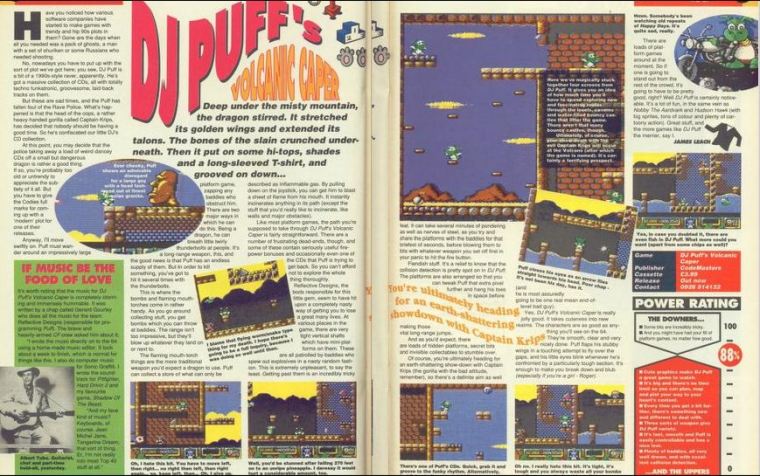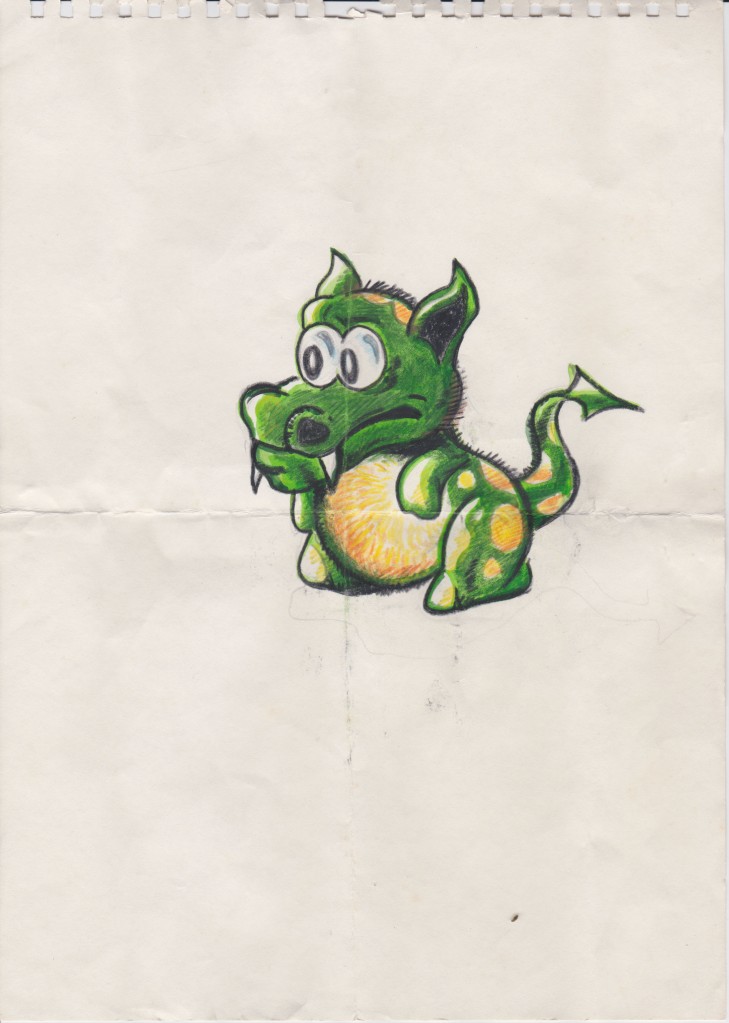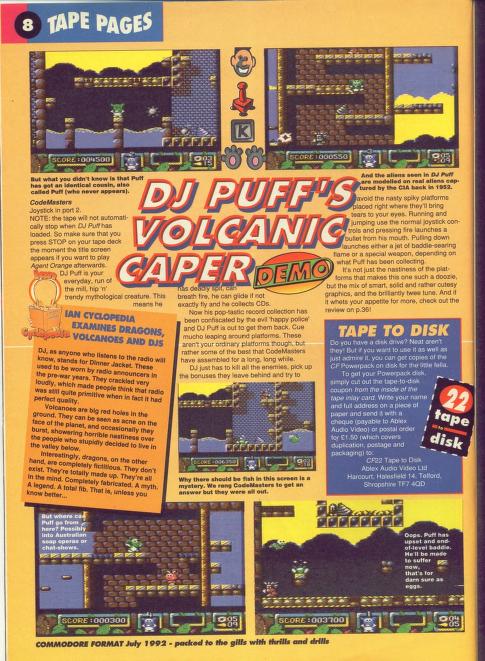=5. DJ PUFF’S VOLCANIC CAPER (88%, issue 22)
1992 was the C64’s last big summer. A year on, CF would be devoting double page spreads to budget re-releases. But for now, things were looking decent: the school holidays’ two […]
Commodore Format magazine fan site
1992 was the C64’s last big summer. A year on, CF would be devoting double page spreads to budget re-releases. But for now, things were looking decent: the school holidays’ two […]
1992 was the C64’s last big summer. A year on, CF would be devoting double page spreads to budget re-releases. But for now, things were looking decent: the school holidays’ two big titles were Robocod and Chuck Rock. With the latter never seeing a UK release, though, and Robocod arriving decidedly undercooked – in spite of a suspiciously enthused review – it was actually a game costing a third of the price that stole the summer.

Puff is, of course, a dragon. And a DJ. His CD collection has been nicked, so he must wander around a large, multi scrolling platformer to get them back, zapping anyone in his way. You can do that by breathing fire onto your enemy, or by chucking a bomb.
It’s pretty obvious where you’re supposed to go, but by going off-plan you can find extra CDs and other bonuses. A mapper’s paradise, really.
WHODUNNIT?
Programmer Duncan Kershaw was impressed with Codemasters’ earlier platform adventure CJ’s Elephant Antics, and set about making a similar engine to build on what had quickly become a very popular style of C64 game. He worked with graphic artist Jonathan Temples (AKA Smyth), who also did the visuals for CJ.

“I became good friends with Dave Clarke (he’s CJ’s C64 coder – Ed). We even shared a house in Warwick whilst working at Codemasters. He thought the spin off was funny. We used to joke about my games and his. DJ Puff was clearly “inspired” by his, although to be fair, his were in turn “inspired” by New Zealand Story (which I think he worked on whilst at Choice Software). I released Stuntman Seymour after DJ Puff, which was of course all based on the same code.”
SURPRISE!
DJ Puff has a little easter egg you might not have uncovered. When some blocks are hit, the border flashes and changes to the title screen music. Hit it again, and it changes once more.
“The hidden blocks are all over the game maps”, says Duncan. “When I sent my game off to the contract coders that converted it to the Amstrad and Speccy versions, they left my debug artwork on the blocks. So in those versions, the hidden blocks are all shown with numbers on them.”
The numbers mean that there is more than one easter egg there, but Duncan can’t remember what the others do. It’s a job for somebody…
SUMMING UP
There were a lot of platformers like this around in 1992. But if you want to play one, DJ Puff is up there with the best. The graphics are colourful and clear, and the animation of the main sprite’s wings is beautiful. Leave Puff long enough and he’ll even blink at you.

The music is ace, too – still whistled by many an old time gamer today. And whilst it’s tricky, it is fun. There’s no unfair time limit so you can poddle about and do what you want. The weapons add variety, there are plenty of baddies and the sheer size of the thing will have you coming back over and over. CF
CF SAID: “The more games like DJ Puff the merrier.”
WE SAY: Colourful, good-natured and affordable fun. It sums up the C64 of 1992 perfectly.